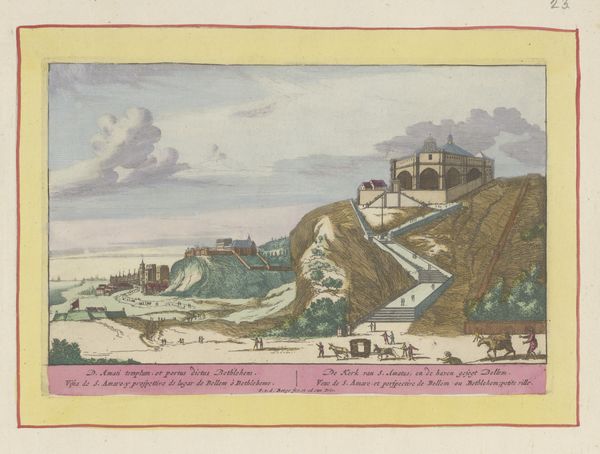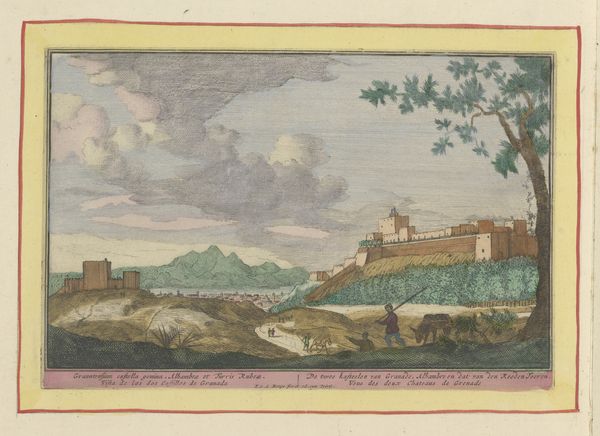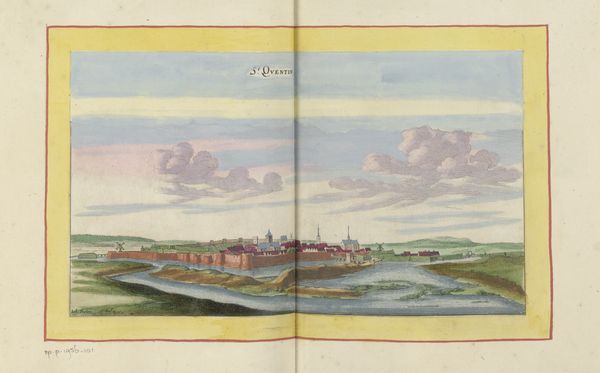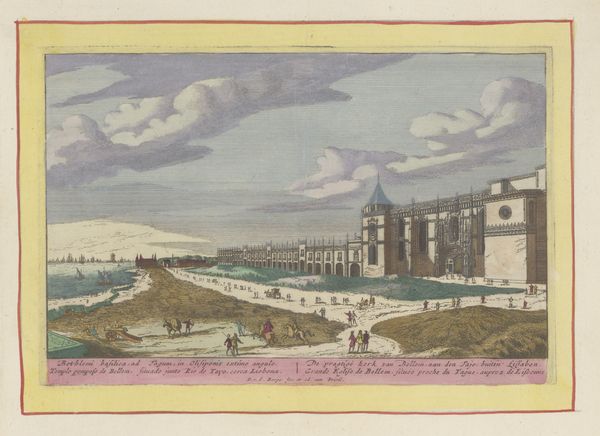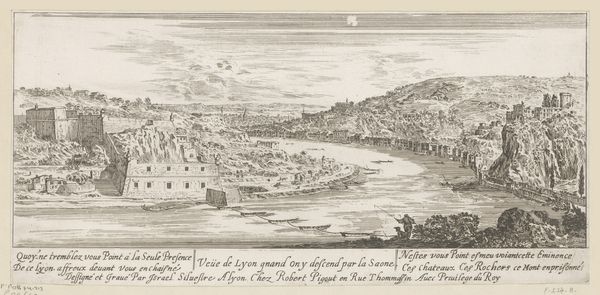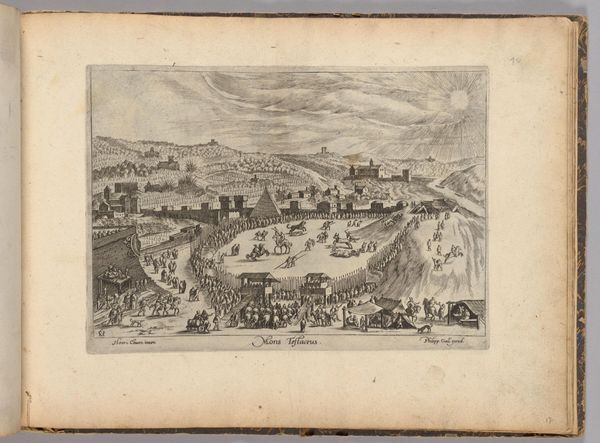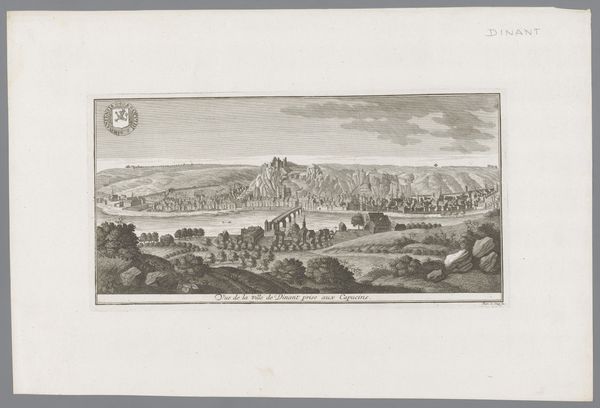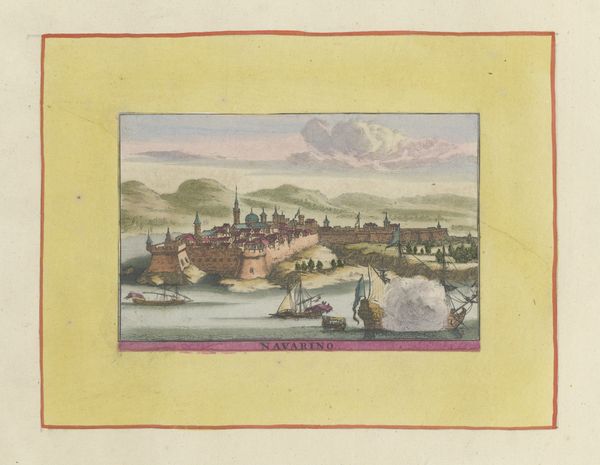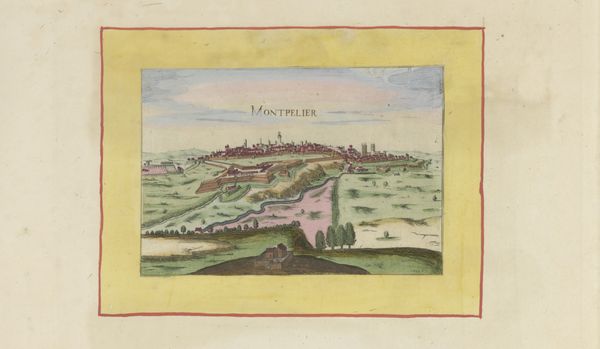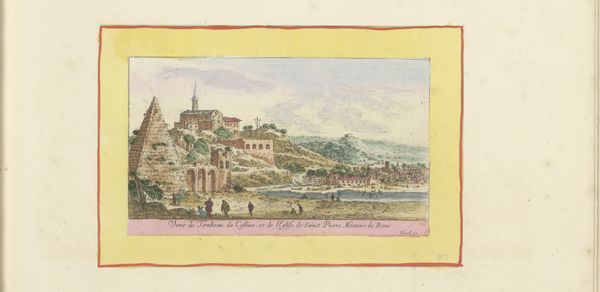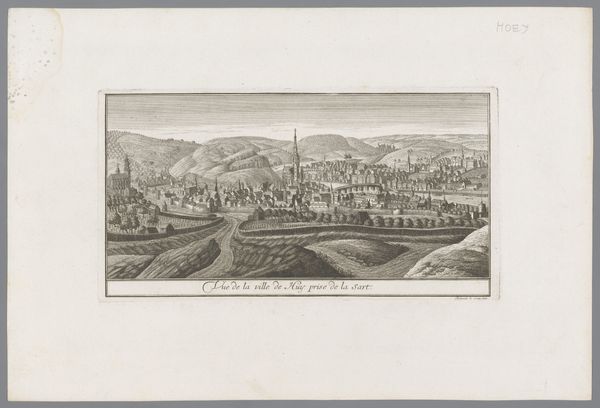
painting, watercolor
#
baroque
#
painting
#
landscape
#
watercolor
#
coloured pencil
#
cityscape
Dimensions: height 168 mm, width 251 mm
Copyright: Rijks Museum: Open Domain
Curator: What an enchanting prospect! This artwork, held at the Rijksmuseum, presents a view of the Portuguese city of Coimbra. It's attributed to Pieter van den Berge and thought to have been created sometime between 1694 and 1737, using watercolor and coloured pencil. The baroque cityscape just unfolds before us, doesn't it? Editor: It does. I'm immediately struck by the light, almost airy quality. It's a brightly rendered scene, yet it also feels slightly melancholic. Is it the angle? That sharp drop behind the city? Curator: The slightly elevated viewpoint does impart a sense of observation, of distance. The walled fortifications wrapping around the crest of the hill speak to Coimbra's historical importance and its need for defense. They are also reminiscent of idealized cities from earlier eras. Editor: Right, like some kind of visual anchor to a more glorified past, with the promise of civilization amid turbulence. Notice how the bridge cuts through, a conduit from town to building – the singular way to join forces. Curator: Indeed. Bridges have held strong symbolism for centuries—connections, passages from one state to another. The cityscape motif itself holds such importance in the cultural understanding of our societies, representing order, civilization, and a control over nature, even if sometimes perceived from afar. The architectural density might hint at something unspoken, in a deeper layer. Editor: What do you mean, deeper? It seems to depict quite a bustling center. Look at the water traffic. Curator: But it's ordered bustle. Planned. Almost sterile. A testament of structure, which at times, serves as a reminder of social control. Perhaps that explains the tinge of melancholy that hangs over it for me. It makes you think of power, but in the control of something potentially vital. The hill versus the village; are these power dynamics visible even in van den Berge’s time? Editor: That’s an intriguing interpretation. From my viewpoint, there's a charming openness to it; perhaps the slight artifice enhances the appeal rather than diminishes it. This isn't realism—it’s an interpretation of the city and what the city embodies, as perceived at the time. A testament of order. Curator: Perhaps both aspects are essential parts of this composition. That interplay of controlled visual symbol versus potential commentary is truly compelling. Editor: A lot to contemplate; its beauty belies its social complexities!
Comments
No comments
Be the first to comment and join the conversation on the ultimate creative platform.
